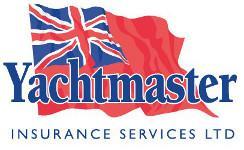Having recently re-launched my second Norfolk Punt after a re-build lasting about 7 years, I was reflecting on how little spare time I seem to have these days compared to the last time I carried out a full re-build of a Punt which I managed in just 10 months! The latest re-build is now racing but in need of some tuning to get up to the speed of the best.
My thoughts then turned to the insurance needs of the owners of sailing craft that are raced. The general principle is that if you are going to race a yacht you should let your insurers know but, strangely, most policies do not specifically exclude racing! There is, however, usually a question in the proposal form concerning racing which needs a “yes” or “no” answer, so if you have answered one way and decide to change your mind, you should let your insurers know.
Where racing is required, underwriters will normally rate up the hull premium and increase the excess which is a reflection of the greater potential for collisions and accidental damage whilst racing. This is particularly obvious at the start of a race when so many craft are vying for position in a limited area. On the Broads these close quarters situations may well continue throughout the race due to the sometimes rather congested waterways, but at sea one can often find a bit more space – at least, until arriving at the first mark! There are, of course, other hazards at sea, not least of which are the wind and wave conditions encountered and the changes in weather that can occur especially on longer races.
The other aspect of racing is that the vessel is often pushed harder than the average cruising yacht might be. Underwriters therefore usually exclude rig damage entirely should there be a failure of any part of the rig without some intervening cause such as stranding, fire or collision with an external object.
There is the option to buy back this excluded rig cover to the extent of two-thirds of the cost of repair or replacement, and this is known as the Racing Risk Extension Clause. To purchase this cover you will need to agree with your brokers/underwriters the total replacement cost with new of the entire rig and all the fittings attached to it, that is, mast, spars, sails (maximum number that might be hoisted or on deck at any one time), standing and running rigging. There is, of course, a charge for this extra cover.
On some of the smaller boat policies the Racing Risks cover is available for the full three-thirds of the cost of repair or replacement with just a deduction of one-third for replacement of sails once these are over 3 years old.
Racing is great fun but it does come with an extra premium cost which is necessary as we do see more claims. In order to avoid incidents it is often necessary for skippers to think some way ahead and not to take chances especially in crossing situations, as port/starboard collisions are surprisingly common and can be quite destructive!
D. Long - 28/05/2010
Return to Media Publications & Advice.

